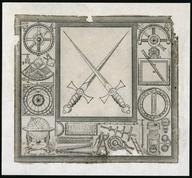







Lithograph, col: 'Chelsea Water Works, New Conduit Pipe' printed by J. Netherdrift, after F. Rumble [ 18--?] Based upon a scheme by the engineer of the Chelsea Water Works Company, James Simpson (1799-1869), the pipe was to be floated across the low water stream of the Thames and then sunk in a trench in the bed of the river. In 1829, under Simpson's direction, the Chelsea Water Works Company was the first to introduce sand filtration in order to try to purify the water they drew from the polluted Thames. The lack of an adequately clean water supply to London's residents led to a series of cholera outbreaks in the mid 19th century.




